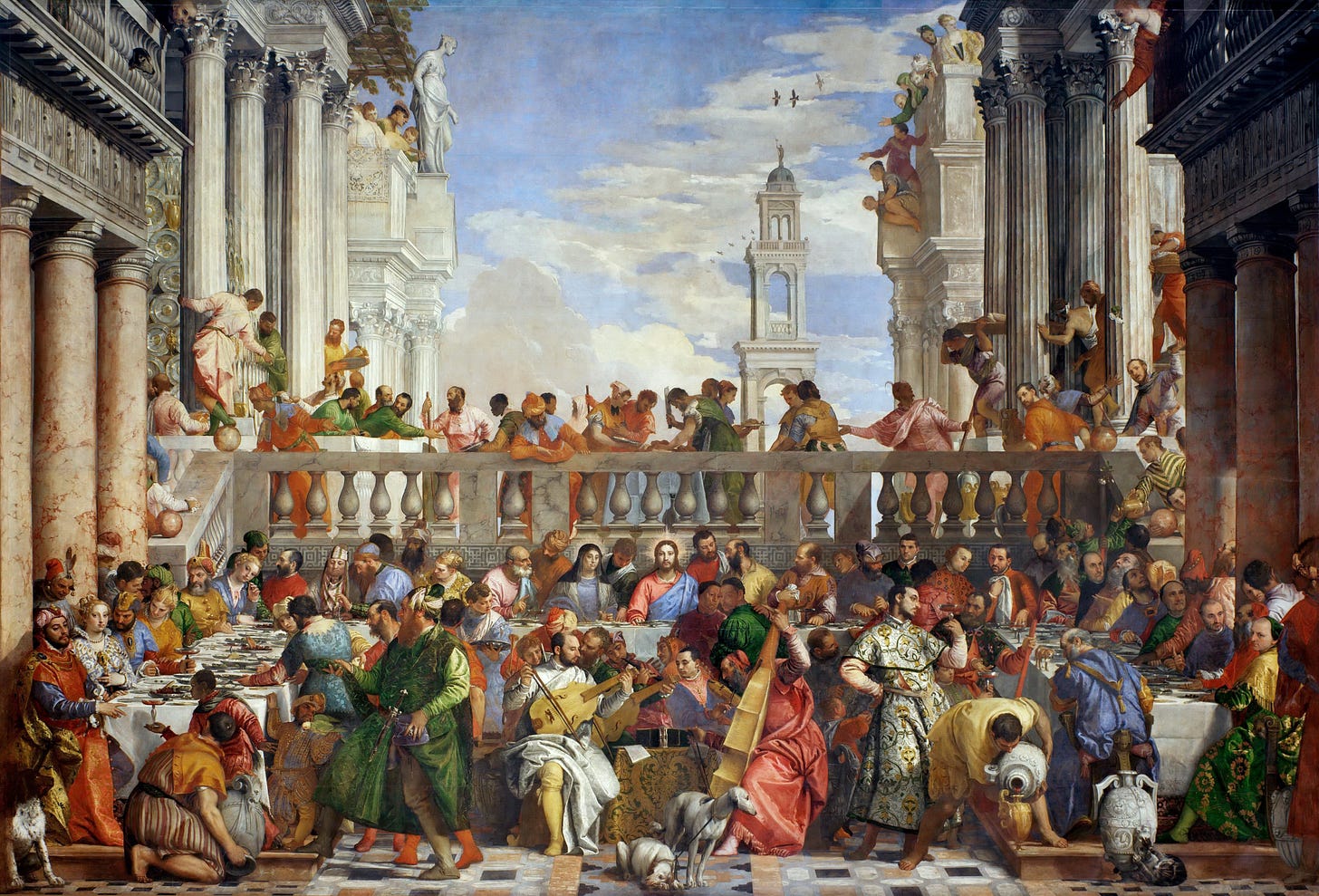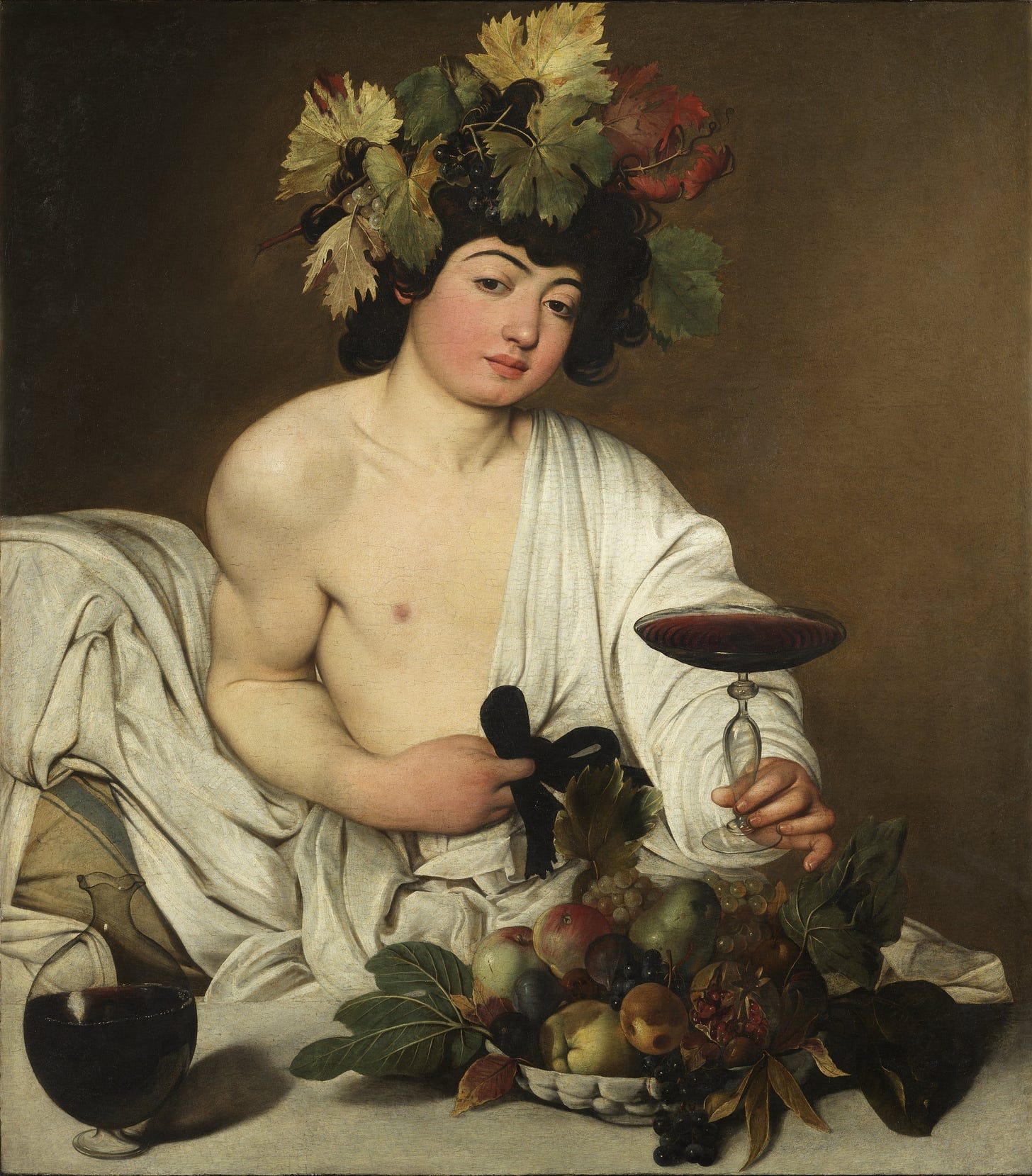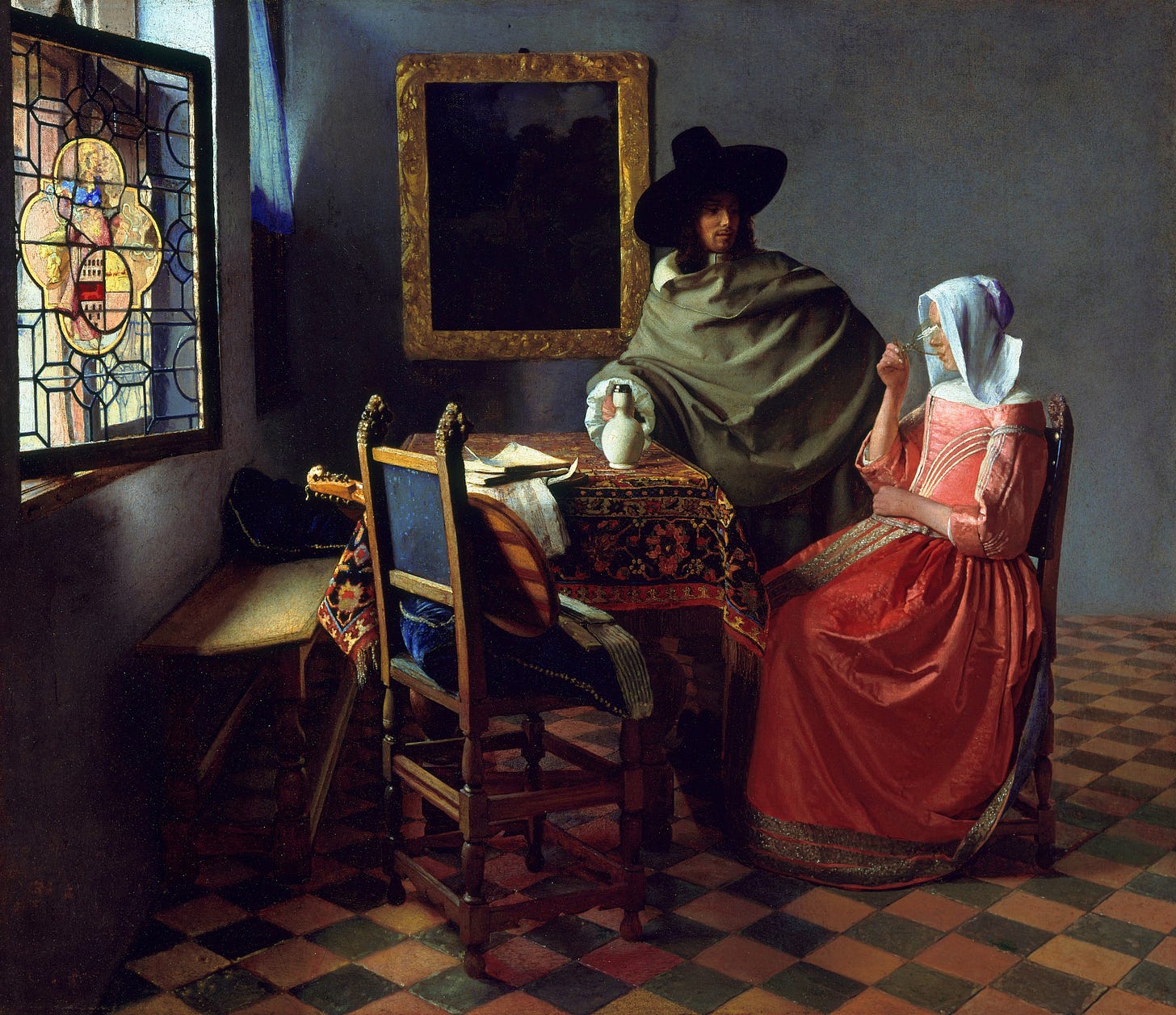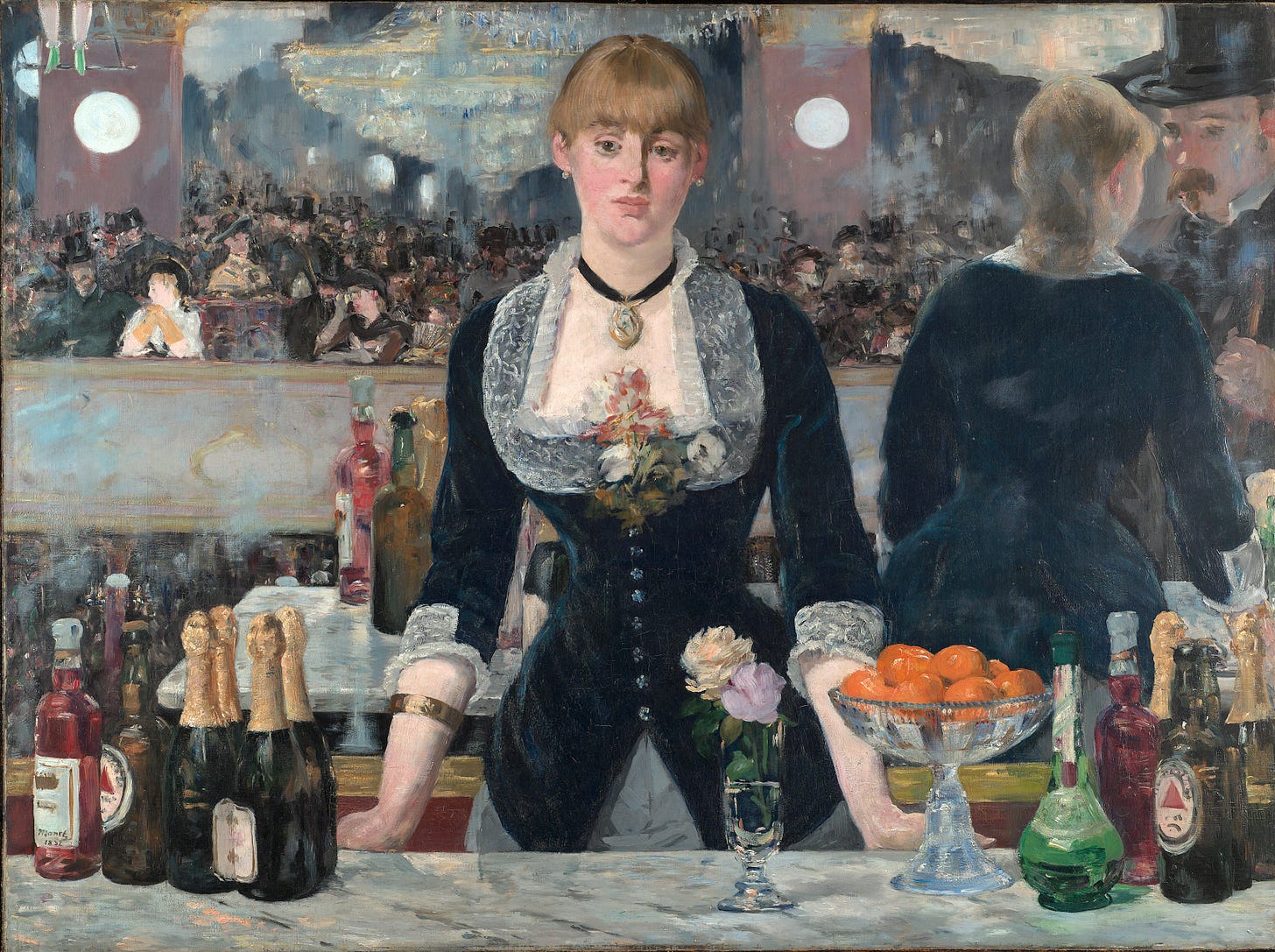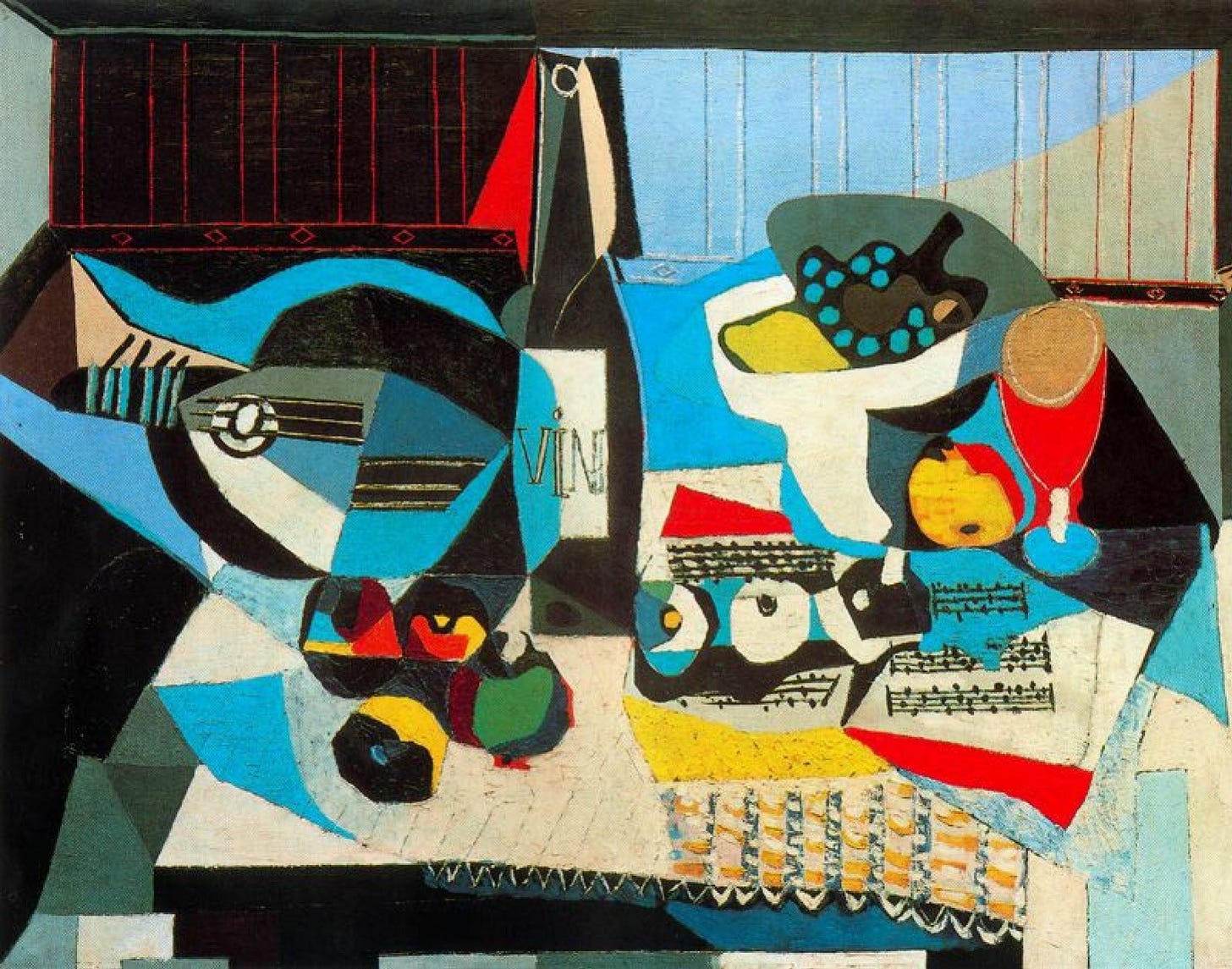Welcome back! Today, let’s pour ourselves a glass of wine and dive into its rich role in art history. Yes, that lovely, swirling elixir has inspired artists both on the canvas and behind the scenes.
The ancient Romans knew how to party, and wine was at the center of their wild celebrations. Artists captured these wine-fueled festivities in vivid frescoes, proving that even back then, a good drink could spark some serious creativity—or at least some questionable decisions.

Fast forward to the Renaissance, where wine flowed as freely as the paint in the studios of great masters. Leonardo da Vinci himself had a vineyard—because why not add "winemaker" to your résumé when you’re already an artist, inventor, and all-around genius?
One of the most epic wine-themed paintings is Paolo Veronese’s The Wedding at Cana, depicting the biblical story of Jesus turning water into wine (like a true party hero). And then there's The Last Supper by Leonardo da Vinci, where wine isn’t just a drink—it’s a symbol of divine communion.
Caravaggio, the bad boy of Baroque, had a relationship with wine as intense as his chiaroscuro. Known for his dramatic use of light and shadow, he was also known for enjoying his vino a bit too much. His famous painting Bacchus depicts the Roman god of wine holding a glass, as if inviting you to join his next night out.
Jumping forward to the Dutch Golden Age, we have The Wine Glass by Johannes Vermeer. This painting captures a quiet moment between a man and a woman sharing a glass of wine, bathed in Vermeer’s signature soft light. The wine here adds a layer of intimacy, hinting at courtship or maybe just a really good first date.
Then there’s Édouard Manet’s A Bar at the Folies-Bergère, a snapshot of Parisian nightlife in the late 19th century. The barmaid, standing behind a counter filled with bottles of wine and champagne, stares out with a somewhat weary expression, possibly reflecting the slightly tipsy, bustling crowd. This painting is a fascinating look at how wine intertwined with social life and the modern city vibe.
Let's not forget the still life genre, where wine often plays a starring role. Picasso’s Bottle of Wine is a cubist take on the beloved beverage, breaking it down into geometric shapes that make you feel like you’ve had a glass too many. Even Picasso’s abstract take on wine reminds us that art, like a good bottle, is meant to be savored and shared.
So, whether it’s symbolizing the divine, marking a celebration, or adding a touch of warmth to everyday scenes, wine has certainly earned its place in art history. Let’s toast to centuries of artistic inspiration. Cheers!
If you enjoy wine, both in a glass and as an art form, I recommend an audio tasting in Thyssen-Bornemisza when you are next in Madrid.
Art needs more eyes — and so does this blog.
It’s free to read, but only grows if it travels.
Liked it even a bit? Tap the heart.
A line stuck with you? Drop it in a comment.
Smiled once? Hit restack.
Want to keep this writing alive? Send it to a curious friend to subscribe.




